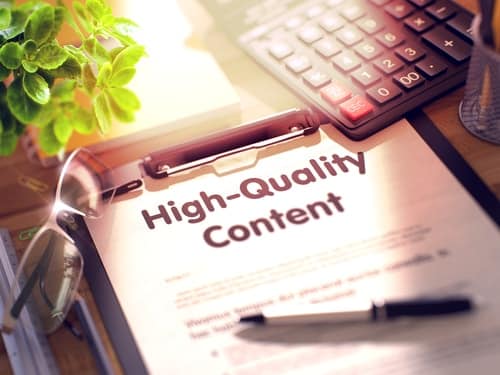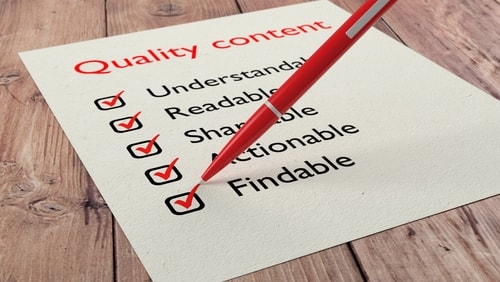Last November, 2015, search engine giant Google released the full version of the Search Quality Raters Guidelines and Handbooks. This document’s aim is to help Google Search Quality Raters learn the most accurate way to test and rate the search results .
You have to listen up now, especially when you own a website. This document of more than 150 pages is full of crucial insights and information as to how websites and pages should be viewed and rated. These information possess the power to help you not just in search engine ranking and positioning but as well as with your overall online marketing strategies.
Don’t have a copy yet? Click here to download the Google Search Quality Guidelines (in PDF form).
If you, however, are a busy person and don’t have the time to read the document – which is quite long, to be honest – then this article provides you the highlights and the important bits of the Google’s Search Quality Guidelines. This post highlights the most impactful parts and to show you how you can improve with your SEO, web design, and general inbound marketing strategy.
Page Quality and Needs Met
 Page Quality and Needs Met are the two existing categories of the search result ratings. So what are these two?
Page Quality and Needs Met are the two existing categories of the search result ratings. So what are these two?
Needs Met – The rating that commands the rater to focus more on the needs of the mobile user and rate your page on how helpful the results are. Needs Met is created since Google is gearing more and more to mobile search – something that website owners should always pay attention. If your mobile web presence is not yet fully developed, then it is time for you to do so.
Page Quality – Checks the page in the SERP (Search Engine Results Page and rates the page using different factors. As mentioned, Google brought most of their focus in the needs met because of the increasing number of people relying on mobile search. However, it doesn’t mean that you have to leave the page quality behind.
For one, when Google releases such document, everyone – I mean everyone from online marketer down to SEO experts – listen up. Two, indirect impact should never be ignored. Google always releases these information with the quality of the page and the results they show.
Understanding Scoring Page Quality and Needs Met
 These scoring provide any website owner a detailed insight on what Google requires in a website though it doesn’t really affect how one’s site is ranked. However, if you’re going to learn and practice what’s on the document, you will have better chances of achieving the purpose of the guidelines. Thus, this will make search engines work better on your favor because you have built trust with your audience and provide them what they need. Here are how sites and search results are scored.
These scoring provide any website owner a detailed insight on what Google requires in a website though it doesn’t really affect how one’s site is ranked. However, if you’re going to learn and practice what’s on the document, you will have better chances of achieving the purpose of the guidelines. Thus, this will make search engines work better on your favor because you have built trust with your audience and provide them what they need. Here are how sites and search results are scored.
Needs Met:
As mentioned earlier, Needs Met is made specifically for mobile search results. While this post is going to cover mostly Page Quality ratings, I will tackle a little bit on this rating category. As people are using their mobiles more with their device, webmasters and companies are also starting to make their mobile online presence felt. Here is a list of how Needs Met ratings are scored:
Fully Meets – Most, if not all, mobile users will have this feeling of satisfaction once they got what they need and they don’t have to look for other sites to look for answers.
Highly Meets – Very helpful for many or most users. A great number of these users will still opt to look for additional results.
Moderately Meets – Helpful for many users OR very helpful for those who are using their mobile phone although a lot are still looking for additional results.
Slightly Meets – Only helpful to a small number of mobile users. There might be a connection between the query and the result even though it doesn’t have a satisfying connection. A lot would still go to other sites for additional results.
Fails to Meet – Doesn’t satisfy the needs of those who are using mobile. All users would want to see additional results from other sites.
The number of results that will have a Needs Met rating score of “Fully Meets” is going to be on the low side of the spectrum. This is because the average user, more often than not, starts with a broad term and then funnels down their search as they go. This gives us an idea that Google does really look into the info that adds values to the searches and what doesn’t. It doesn’t matter what niche or industry your website belongs to, making a very positive mobile user experience matters to Google.
Page Quality Rating: The Break Down
 As written on the 8th page of the Search Quality Evaluator’s Guidelines, “As long as the page is created to help users, we will not consider one particular purpose or type of page to be higher quality than another. For example, encyclopedia pages are not necessarily higher quality than humor pages.” Therefore, it is safe to say that page quality ranking is important even though it doesn’t have any significant impact to your site’s ranking. Below is a list of common helpful page purposes that you need to know (but not limited to):
As written on the 8th page of the Search Quality Evaluator’s Guidelines, “As long as the page is created to help users, we will not consider one particular purpose or type of page to be higher quality than another. For example, encyclopedia pages are not necessarily higher quality than humor pages.” Therefore, it is safe to say that page quality ranking is important even though it doesn’t have any significant impact to your site’s ranking. Below is a list of common helpful page purposes that you need to know (but not limited to):
- Allowing users to post questions for other users to answer.
- Allowing users to share files or to download software.
- Entertaining
- Expressing an opinion or point of view.
- Selling products or services
- Sharing information about a topic.
- Sharing personal or social information.
- Sharing pictures, videos, or other forms of media.
There is also another category that has much higher standards than the rest, and it’s called Your Money, Your Life (YMYL) pages. Unlike other pages that are graded the same, a lot is more expected when your site belongs to this category. This category is where the shopping sites, medical pages, financial information pages, and legal information belong, among others.
So why is this category has a higher standard? For security reasons. Low quality pages could mean in harm to the user. If you have a website under the YMYL category, it’s gonna be embarrassing to have it placed on a negative rank. The page quality matters and it may impact you a lot if it’s perceived as low quality or harmful.
Content is King (and We’ll Keep It That Way)
 The content is still a royalty as far as the Page Quality Rater is concerned, as content is still used to measure how well a page achieved its purpose. In the document, content is divided into three categories: Main, Supplementary, and Advertisements/Monetization.
The content is still a royalty as far as the Page Quality Rater is concerned, as content is still used to measure how well a page achieved its purpose. In the document, content is divided into three categories: Main, Supplementary, and Advertisements/Monetization.
Main Content is where you will find the information on the purpose of the page. This includes quality text as well as the images, videos, and other features that help explain the purpose. That is why when creating a page on your site, make sure that you know the purpose or why you are creating it.
But first, let’s be clear with the quality. This word has been misused in the online marketing world for a while now, so let’s make it all clear by using how the Google’s Guideline define it. According to the guideline, Google judges the quality of the page’s Main Content according to its Expertise, Authoritativeness, and Trustworthiness. On the 21st page of the guideline, it says “we will value this ‘everyday expertise’ and not penalize the person/page/website for not having ‘formal’ education or training in the field.”
The second type of content is the supplementary content, which is also a very important factor of the content. The goal of this category is to support the main content’s purpose so that it can create a better user experience. Features that belong to this category include links to other pages or content behind tabs. You have to make sure that supplementary content should be wholesome and not distracting to the user.
The last of the type content is ads. It may be a distracting view to some but some pages just won’t exist without these ads. Don’t be scared of having ads in your page, as long as it won’t distract from the Main Content then that’s fine.
Other Factors That Can Help In Page Quality Rating
Having an ‘About Us’ Page
This is something given but a lot of websites don’t do this. Having an “About Us” page means that somebody truly owns the website and you as a user can approach the owner. This will provide impact in the trustworthiness factor. Not only will it provide the users a knowledge and background about you but it will also give you the space to become personal with your audience.
Website Maintenance
 A good website means a well-functioning one on all platforms. Having a regular website maintenance is a must. Links should work, codes should be double-checked, and contents should be updated among other things.
A good website means a well-functioning one on all platforms. Having a regular website maintenance is a must. Links should work, codes should be double-checked, and contents should be updated among other things.
So how does this translate to SEO?
A well-oiled website is an indication that you, the website owner, does care for it. When they detect that you update your website regularly, search engines will be happy and your rankings will become favorable.
Reputation
Now this is why you should always be attentive when it comes to providing amazing real user experience. If you say one thing about your site or services but then a well-known external source says otherwise, be careful. Always make sure you can defend and explain what you say or claim.
This is where the importance of reviews come in. And I mean real, good reviews. Although bad reviews are bound to happen (you can’t just please anyone), having a flood of fake “good” reviews won’t do you good either. The best way to get a good reputation is still to keep up to what you promise.
For those who own smaller businesses, however, it states on page 19 that lack of reviews or reputation should not be an indication of low quality. Take advantage of this and provide the best quality you can give to your customers.
Functional Page Design
For those who are website designers there, listen up. A designer’s focus should always be the main content. The page should be arranged well and the navigation and options should be easy for users to use. Here are some things to keep in mind when you consider your page design:
- Main Content should always be “front and center”, and should always be the first things that users will see when opening your page or website.
- Everything should blend well. Make sure that design to the use of space, font, font size, color, and background make the Main Content to focus.
- Supplementary Content and Ads should be arranged well.
Conclusion
These are just some of the highlights that the document provides. Although these info are already a lot to learn, I still suggest you to download it and read through it yourself. If you have difficulty in keeping up with the guidelines or you don’t have the time to do it yourself, you can hire an SEO expert who knows the ways of online marketing. Click here to learn more.

